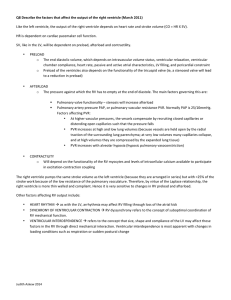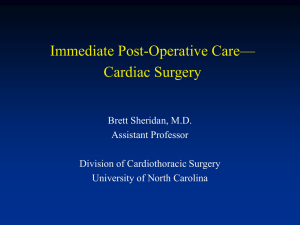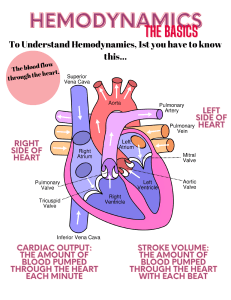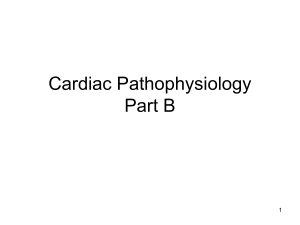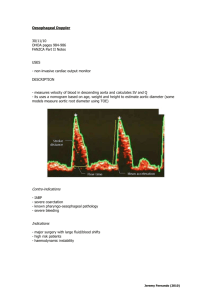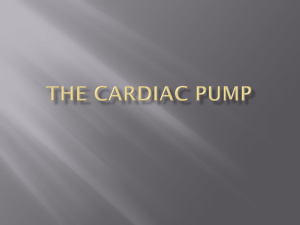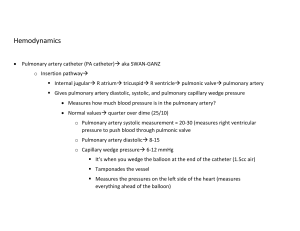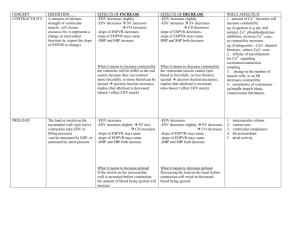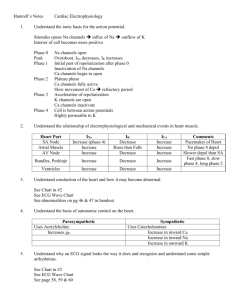Hemodynamics 1
advertisement
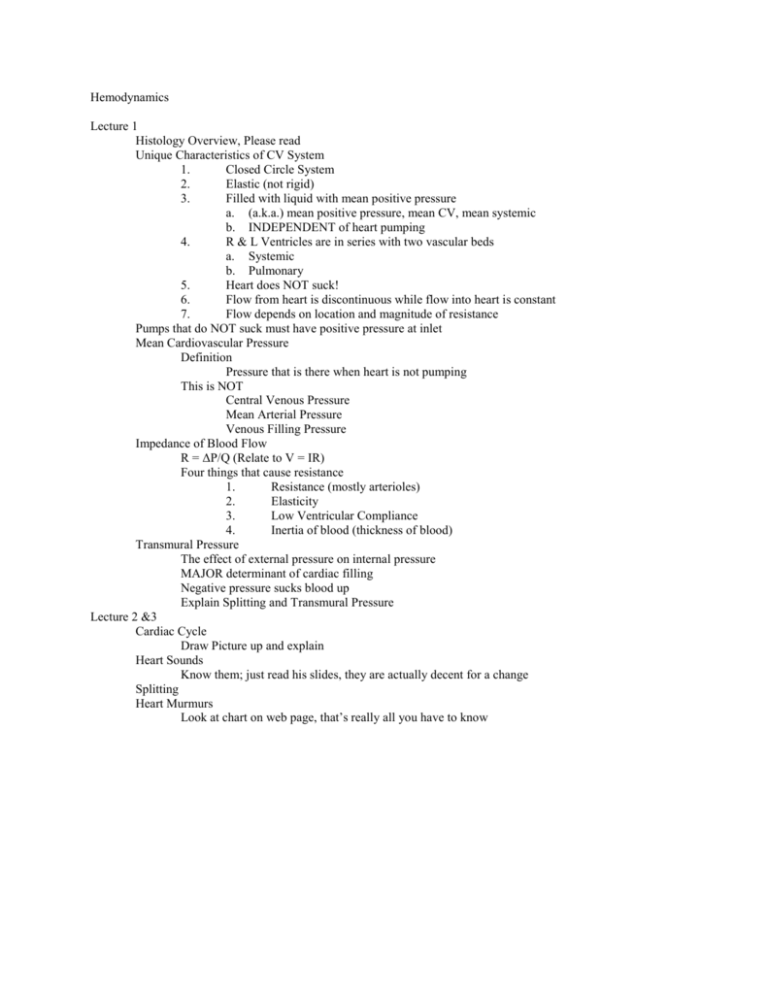
Hemodynamics Lecture 1 Histology Overview, Please read Unique Characteristics of CV System 1. Closed Circle System 2. Elastic (not rigid) 3. Filled with liquid with mean positive pressure a. (a.k.a.) mean positive pressure, mean CV, mean systemic b. INDEPENDENT of heart pumping 4. R & L Ventricles are in series with two vascular beds a. Systemic b. Pulmonary 5. Heart does NOT suck! 6. Flow from heart is discontinuous while flow into heart is constant 7. Flow depends on location and magnitude of resistance Pumps that do NOT suck must have positive pressure at inlet Mean Cardiovascular Pressure Definition Pressure that is there when heart is not pumping This is NOT Central Venous Pressure Mean Arterial Pressure Venous Filling Pressure Impedance of Blood Flow R = ΔP/Q (Relate to V = IR) Four things that cause resistance 1. Resistance (mostly arterioles) 2. Elasticity 3. Low Ventricular Compliance 4. Inertia of blood (thickness of blood) Transmural Pressure The effect of external pressure on internal pressure MAJOR determinant of cardiac filling Negative pressure sucks blood up Explain Splitting and Transmural Pressure Lecture 2 &3 Cardiac Cycle Draw Picture up and explain Heart Sounds Know them; just read his slides, they are actually decent for a change Splitting Heart Murmurs Look at chart on web page, that’s really all you have to know Lecture 4, 5, 6 Preload Created by venous return to heart Determined by: 1. blood volume 2. body position 3. atrial kick 4. systemic vasculature 5. ventricular diastolic compliance 6. skeletal muscles (skeletal muscle squeeze veins, which increase blood to heart b/o 1 way valves) Enhanced by inspiration Increase Preload Increase End-Diastolic Volume No change in ESV – So, Increase in SV (SV = EDV – ESV) Slight increase in diastolic blood pressure and systolic blood pressure Not much because Afterload impedes this Afterload All factors that impede ejection of blood from ventricle 3 Components: 1. Resistance a. created by circulation (most by arterioles) b. BP used to measure Left Ventricular Afterload 2. Compliance of ventricle a. stiffer ventricle decrease compliance increase pressure to eject blood b. stiffer aorta decrease compliance increase pressure b/c can’t stretch 3. Blood Characteristics a. Increase in hematocrit Increase in viscosity increase in resistance Contractility State of shortening of myofibrils of ventricles under standard load conditions Causes rapid change in pressure Increased contractility = increased ventricular work Increase in contractility increase in ESP (isovolumetric) and decrease in ESV (isobaric) Dumb details Frank Starling Principle (slingshot) law of diminishing returns Pressure Volume Loops Normal Effect of Preload Effect of Afterload Effect of Contractility
